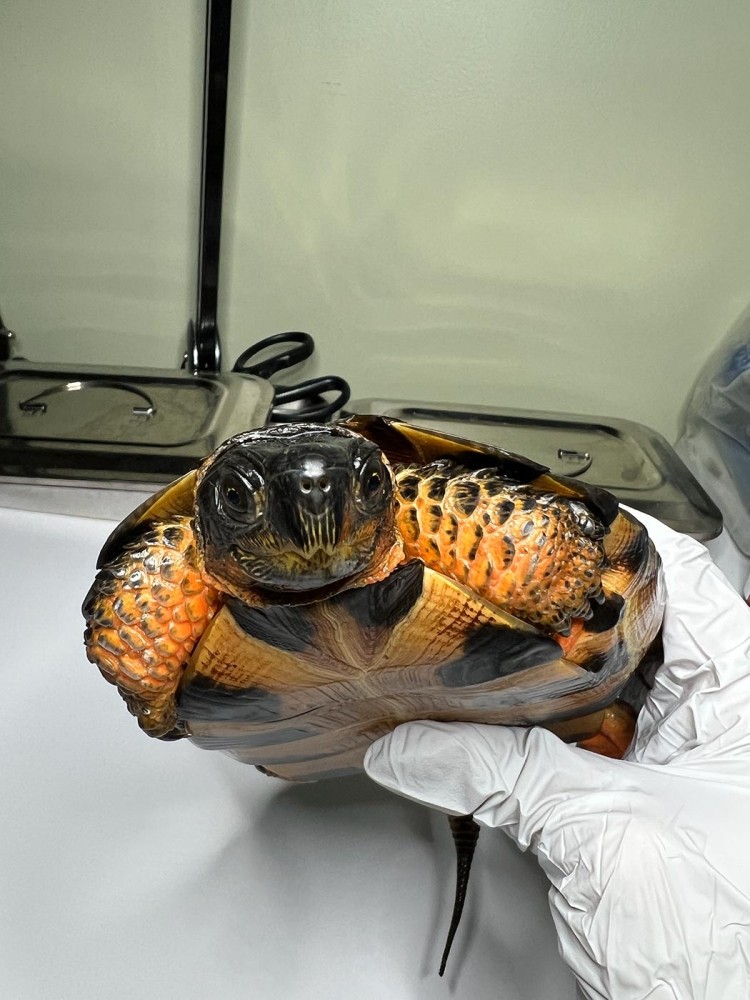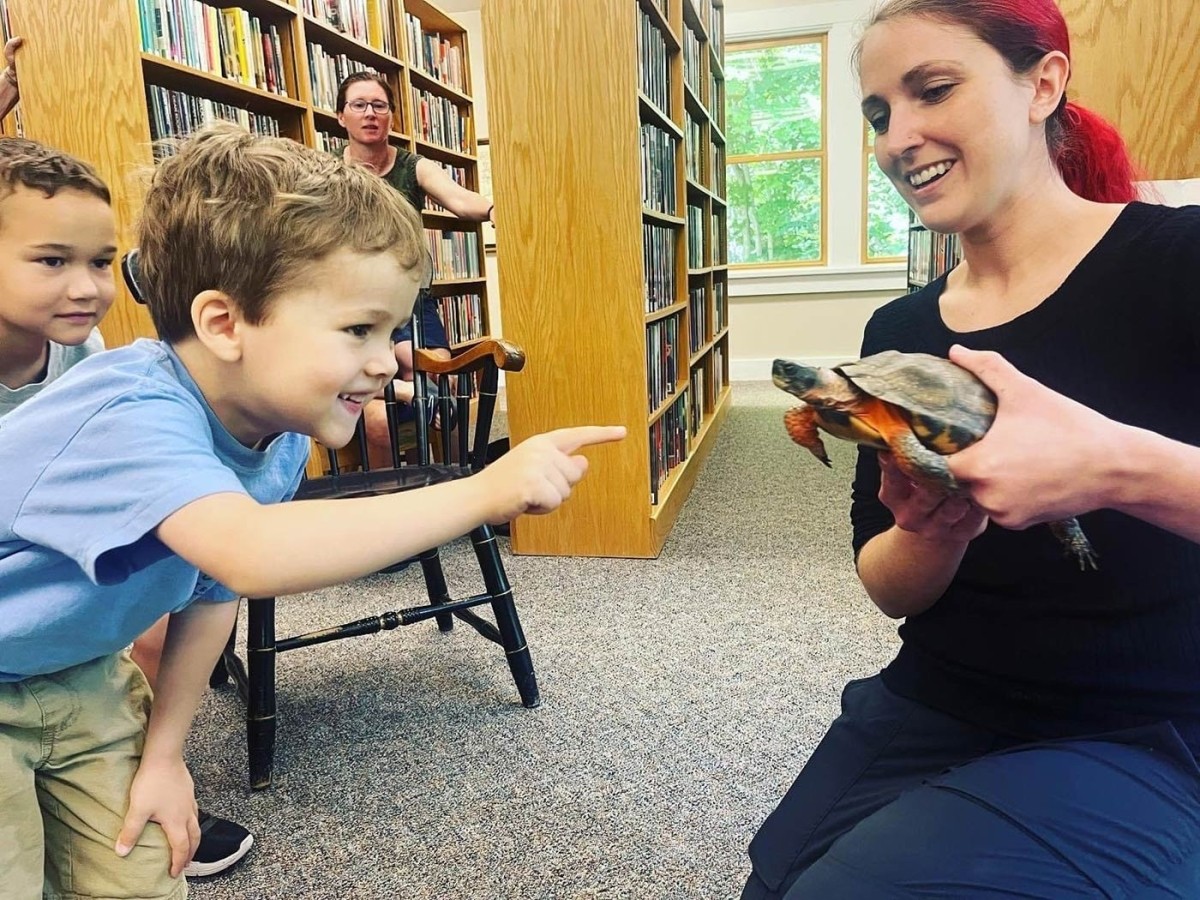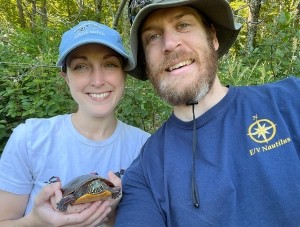
Growing up in the Bay Area in California, Dallas Huggins had “minimal exposure” to the natural world. She started hiking as a teenager, but really dove into exploring the outdoors when she moved to New Hampshire about a decade ago. After working with established wildlife rehabilitators, including Jane Kelly from On the Wing and turtle specialist Chris Bogard, Dallas and her husband Drew Stevens established New Hampshire Turtle Rescue in 2022. As the only licensed wildlife rehabilitators in the state specializing in turtles, the pair has been busy – this year they have worked with 140 turtles (and counting).
When we moved to New Hampshire I was introduced to some amazing field biologists and wildlife track and sign experts. Alexej Siren, Erica Johnson, Dan Gardoqui, Dan Hansche, and Eric Aldrich were pivotal in my experiencing the natural world in a way I never had before. I participated in several projects and field surveys. I really wanted to get more involved in working with animals and with wildlife. When I heard about the field of wildlife rehab, I thought it seemed like a really direct way of giving back.
We love all wildlife, but we decided to focus on turtles in large part because of their great ecological significance. Turtles are incredibly long-lived compared to most other animals. A loss of one individual is very detrimental to their populations and the ecosystem. Being able to rescue and release a turtle means they have the potential to live another 20, 60, or even 100 years. A Blanding’s turtle can live to over 80 years old, which means only a couple of generations have even experienced the landscape of roads we have today. Among other dangers, human-derived changes to the environment are threatening turtles in unprecedented ways. It can make a big difference mitigating some of that impact. Education is also a really big part of the work we do. You can save individuals all day, but if you’re not trying to fix the bigger problems, it’s just not as useful.
There was only one rehabilitator in New Hampshire who focused on turtles, Chris Bogard, until she retired this year. We are lucky that she is our mentor and has taught us so much, and continues to provide guidance when needed. Turtles have such unique anatomy, and are incredibly resilient, and we believe specializing on their treatment is the best way to give them the best care possible. In surrounding states there’s Turtle Rescue League in Massachusetts and Turtle Rescue of the Hamptons in New York, and it’s been incredible to learn from them and to be a part of a network of turtle rehabbers.
New Hampshire has seven native turtle species, including four identified as species in greatest need of conservation: Blanding’s turtles, spotted turtles, wood turtles, and eastern box turtles. The non-listed species are painted turtles, snapping turtles, and musk turtles. We receive a disproportionate number of painted turtles, which is the most common turtle species in New Hampshire, and next would be snapping turtles. Due to the natural history of musk turtles, we rarely get them in rehab. We are based in a fabulous region for Blanding’s turtles and spotted turtles, so while they are both listed, and Blanding’s are critically endangered, we do receive them more often than you would expect. We more rarely receive wood turtles. Box turtles are almost non-existent in the state.
Habitat loss is definitely the biggest challenge to all turtle species. Blanding’s turtles, wood turtles, and spotted turtles are particularly impacted by this, since they are habitat specialists. One of the most challenging things is seeing the human impact to the wetland habitats that support such incredible biodiversity. Wildlife rehabilitation is reactive – the best way to help turtles and all wildlife is to be proactive and protect their environments. I am on my local conservation commission and try to spread this message as much as possible, but as an individual I am powerless to stop the degradation of wetlands environments happening all over the state, and there’s far too much money in development, compared to the minuscule amount that is put towards conservation.
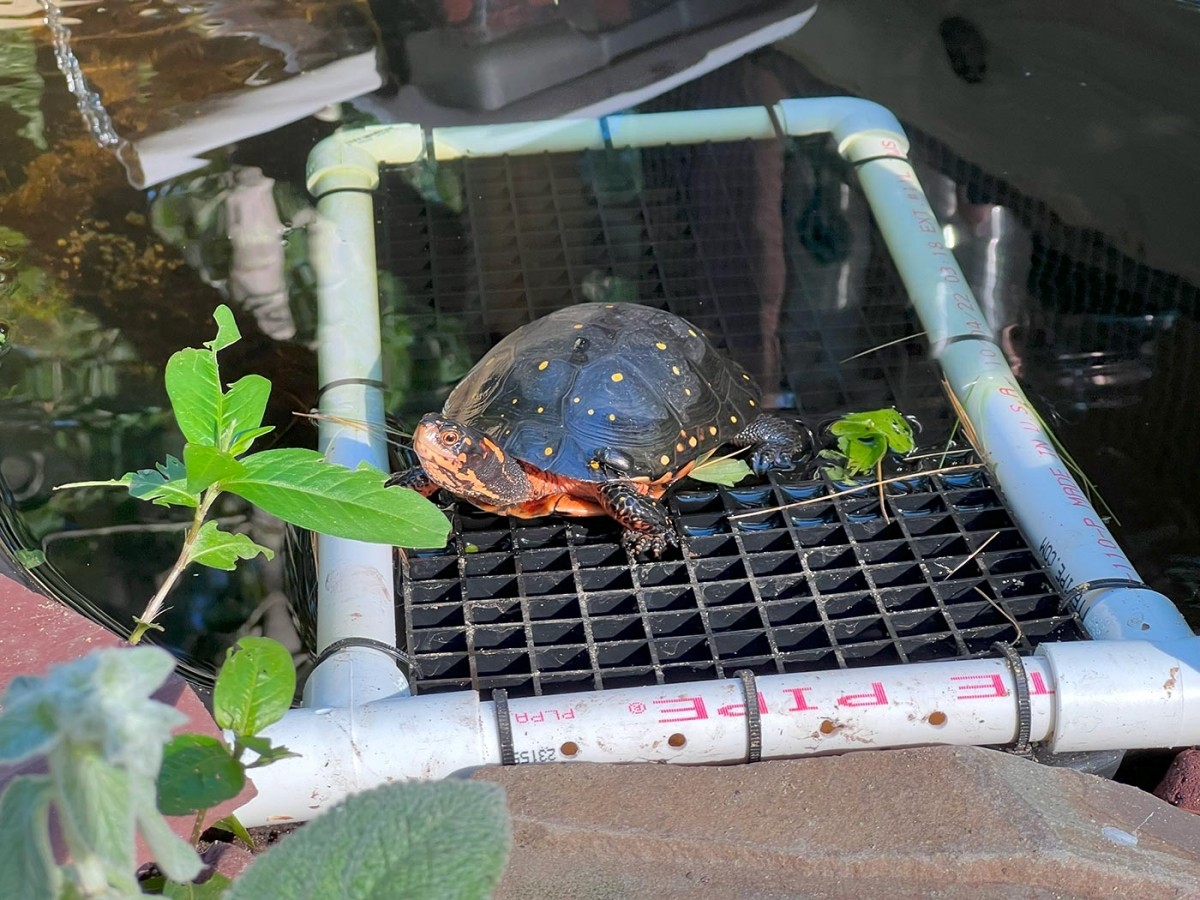
The most common reason we receive turtles is due to car strikes. Females often travel long distances to find suitable nesting habitat, and males and females alike will move between wetlands. Often those wetlands are bisected by a road. New Hampshire Fish & Game works with landowners to create nesting habitat close to wetland environments to prevent turtles from having to cross roads, so that is one way landowners can help to prevent road mortalities, aside from the best way, which is land conservation. The second most common reason we receive turtles is dogs and then lawn mowers, both of which happen due to homes being built in the middle of the turtles’ habitat – so again, a symptom of habitat loss.
Last year we had 60 turtles. This year we have more than 140 turtles. The rehab space is in our home. We have everything on timers, and we used to have lots of turtles in the bedroom, so at 7 a.m. we’d be flooded with bright lights. This year we did a big construction project to renovate our basement to become a turtle clinic. We still have ambassador turtles upstairs with us, but we don’t have turtles in every space we live in. It is nice to have it concentrated downstairs. We have two areas outside for nesting females. We have one big enclosure for resident box turtles. Next year we are hoping to have unique settings for non-releasable Blanding’s and wood turtles.
We had a female Blanding’s turtle come in this spring, and she laid her eggs here. The hatchlings emerged this week, and I am just over the moon. We end up with eggs for a number of reasons. Sometimes deceased females are delivered to us, or they die soon after arriving. We can remove eggs from the oviduct. It’s a way of making something out of a tragedy. We have an incubator setup. We can’t use a chicken incubator, because chickens rotate the egg, and that would kill reptile eggs. So, there are some unique things about turtle egg incubators. Really, it’s about keeping the temperature consistent, and high humidity. Right now, we have really limited incubator space, so we’re only able to incubate eggs from the listed species. We do have some snapper hatchlings this year, because we had space. Next year we hope to have enough space that we can incubate the eggs of any species we end up with.
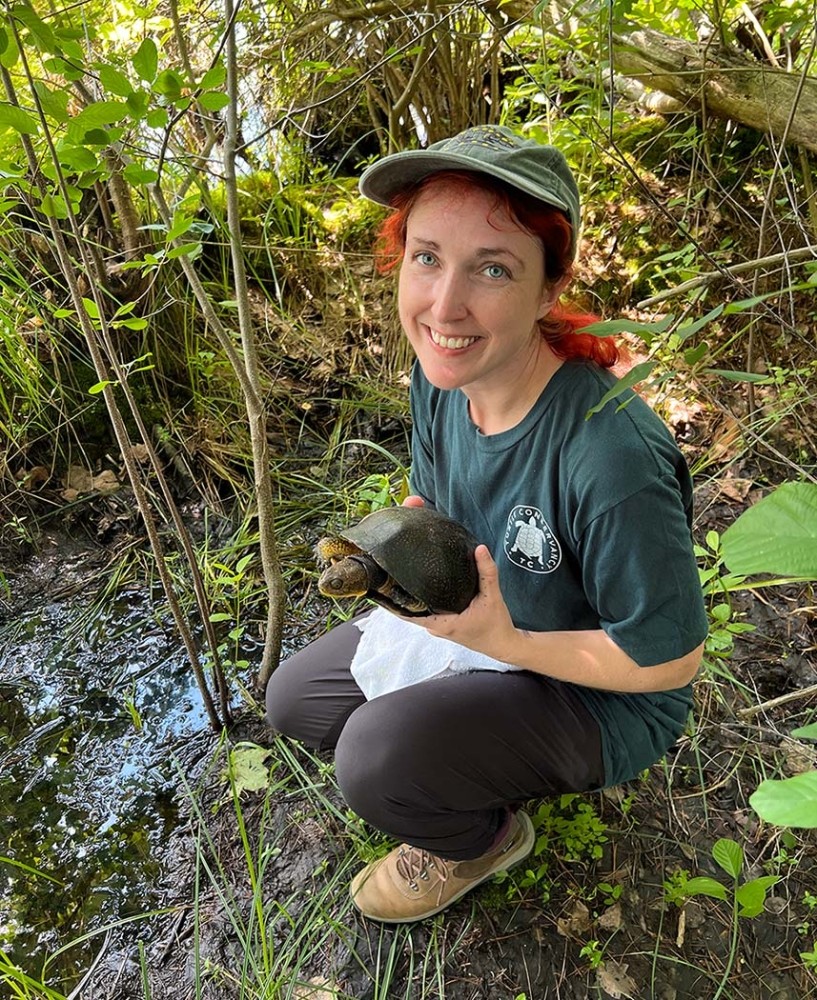
We will be headstarting all of the hatchlings we have, so we’ll keep them through the winter and release them first thing next spring. At that point, they’re more able to evade predators. Turtle hatchlings require very specific care and habitat conditions to be successfully returned to the wild, and the needs vary significantly by species. Rearing a hatchling incorrectly can result in permanent deformities that can lead to a shortened lifespan. Certified wildlife rehabilitators understand these requirements and have extensive knowledge of their local area to find a suitable release location. It’s important that hatchlings are not taken out of the wild – and that if a hatchling does need help, it goes to a licensed wildlife rehabilitator who specializes in turtle care. We have a few box turtle juveniles in our care that will be released next spring. We’ve had them for two years as part of a program with the Zoo of New England and New Hampshire Fish & Game to increase the numbers of box turtles in the state, because they’re almost non-existent.
We have a Fish & Game biologist on our board of directors, and we work with the agency sometimes to determine the best release location for turtles ready to return to the wild. We had a wood turtle the other day from a very busy downtown area, and we didn’t want to make a guess about where to release it and put it in danger of busy roads. That turtle was notched, which is an identification method, so the Fish & Game biologists had documented him in the past and were able to help us find the right place to release him.
Returning a turtle to its home is the best feeling in the world. Turtles are incredibly resilient, but they are slow healers, and the rehab journey is often a lengthy one. Throughout the time they are in care, you wish so badly you could communicate to them why you are doing what you're doing, and that it’s for their benefit. When we release turtles, it’s not uncommon for them to swim back and stare for a while, and I always wonder what they are thinking. I imagine it’s something along the lines of, “What the heck just happened?” It warms my heart to know that by helping this turtle, we have mitigated some amount of human impact to the environment, and that the turtle can return and be a critical part of the ecosystem again.
One of my favorite ways to explore and learn about wildlife is through tracking. Lead with Nature’s Dan Gardoqui has been a long term mentor of mine, and going out on nature excursions with him has completely opened up my mind in so many ways. I’m particularly fascinated with animal behavior and how animals interact with their environment, and the more you can interpret wildlife track and sign, the more you can paint a picture in your mind of what’s going on around you.
I’ve spent a lot of time tracking bobcats. I worked with Eric Aldrich for years following bobcats to their denning spots during winter and then placing cameras up to monitor year round, and it’s so incredibly eye opening. Walking in an animal’s footsteps is an incredible experience. With bobcats, you see so many unsuccessful attempts at finding prey, and you can empathize with the struggle of having to seek out food each day and how difficult it is. You also see unexpected behavior, like bounding from boulder top to boulder top for no apparent reason – not something you’d expect from an animal trying to conserve energy.
I also absolutely love birding and can’t get enough of watching birds and learning about their songs, behavior, how they interact with each other and other species. It’s amazing how you can understand what’s going on around you by interpreting bird calls or mammal vocalizations, and how they all work together to protect each other from predators. Nature is endlessly fascinating.


